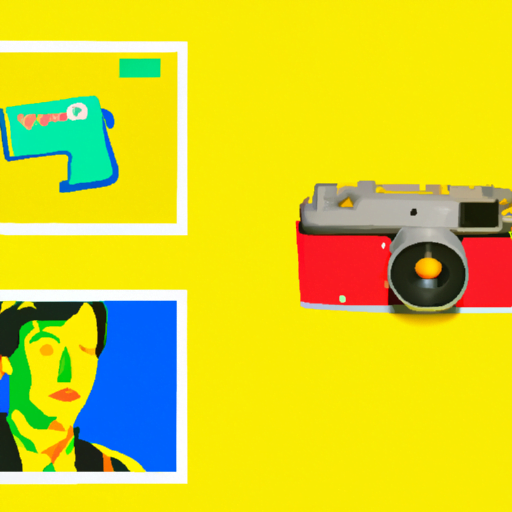
-
Table of Contents
Illustration Techniques for Graphic Designers
Illustration is a powerful tool in the world of graphic design. It allows designers to communicate ideas, evoke emotions, and create visually stunning designs. Whether you are a seasoned graphic designer or just starting out, mastering illustration techniques can greatly enhance your design skills. In this article, we will explore some of the most effective illustration techniques for graphic designers, along with examples, case studies, and statistics to support our points.
1. Hand-drawn Illustrations
Hand-drawn illustrations have a unique charm and authenticity that can bring a personal touch to your designs. They can be created using traditional mediums such as pencils, pens, or markers, or digitally using a graphics tablet. Hand-drawn illustrations can be used in various design projects, including logos, posters, packaging, and more.
Case Study: The famous clothing brand, Patagonia, uses hand-drawn illustrations in their marketing materials to convey a sense of adventure and connection with nature. Their hand-drawn logo and illustrations create a distinct brand identity that resonates with their target audience.
2. Vector Illustrations
Vector illustrations are created using mathematical equations and are resolution-independent, meaning they can be scaled to any size without losing quality. This makes them ideal for various design applications, including logos, icons, infographics, and illustrations for web and mobile interfaces. Adobe Illustrator is a popular software tool for creating vector illustrations.
Example: The iconic Apple logo is a perfect example of a vector illustration. It is simple, clean, and instantly recognizable, making it one of the most successful logos in the world.
3. Digital Painting
Digital painting allows graphic designers to create realistic and detailed illustrations using digital tools and software. It offers a wide range of brushes, textures, and effects that can mimic traditional painting techniques. Digital painting is often used in concept art, character design, book covers, and game design.
Case Study: The video game “The Last of Us” features stunning digital paintings that set the mood and atmosphere of the game. The detailed environments and characters created through digital painting contribute to the immersive experience for players.
4. Collage
Collage is a technique that involves combining different elements, such as photographs, illustrations, textures, and typography, to create a visually striking composition. It allows designers to experiment with different materials and textures to create unique and eye-catching designs. Collage can be used in various design projects, including posters, magazine covers, and album artwork.
Example: The cover art for the album “Random Access Memories” by Daft Punk features a collage of vintage photographs, illustrations, and typography. The collage technique adds a retro and nostalgic feel to the design, reflecting the music style of the album.
5. Flat Illustrations
Flat illustrations, also known as flat design, are characterized by their minimalistic and simplified style. They use bold colors, simple shapes, and clean lines to create visually appealing designs. Flat illustrations are widely used in user interfaces, icons, and infographics.
Statistics: According to a study conducted by Nielsen Norman Group, flat design can improve the usability of websites and applications by reducing cognitive load and improving visual clarity. The study found that users were able to complete tasks faster and with fewer errors when interacting with flat designs compared to more complex designs.
6. Isometric Illustrations
Isometric illustrations are created using a 3D perspective that eliminates vanishing points, resulting in a flat and geometric look. They are often used to represent objects, buildings, or scenes in a visually interesting and engaging way. Isometric illustrations can be used in various design projects, including infographics, icons, and illustrations for websites and mobile apps.
Example: The website of the game “Monument Valley” features isometric illustrations that create a surreal and dreamlike atmosphere. The isometric perspective adds depth and dimension to the designs, enhancing the overall user experience.
7. Typography Illustrations
Typography illustrations combine typography and illustration to create visually striking designs. They involve manipulating and arranging letters, words, and phrases to form images or convey a message. Typography illustrations can be used in various design projects, including posters, book covers, and logos.
Case Study: The “Love” sculpture by Robert Indiana is a famous example of typography illustration. The sculpture features the word “LOVE” in bold and colorful letters arranged in a square shape. The typography illustration has become an iconic symbol of love and has been reproduced in various forms around the world.
Summary
Mastering illustration techniques can greatly enhance the skills of graphic designers. Hand-drawn illustrations bring a personal touch, while vector illustrations offer scalability and versatility. Digital painting allows for realistic and detailed designs, while collage creates visually striking compositions. Flat illustrations improve usability, and isometric illustrations add depth and dimension. Typography illustrations combine typography and illustration to create visually striking designs.
By incorporating these illustration techniques into their designs, graphic designers can create visually stunning and engaging designs that effectively communicate ideas and evoke emotions. Whether it’s a hand-drawn logo, a vector icon, or a digital painting, the right illustration technique can elevate a design to the next level.
